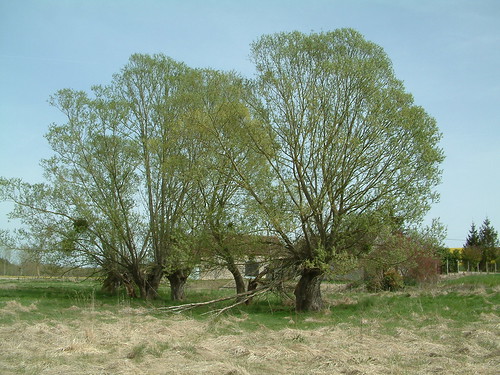 |
| The weather in February 2007 was wonderful... it even brought out the Small Tortoiseshell from hibernation... and, yes, there were flowers for it to feed from! [taken19th February] |
By this point Stuart and I had got into a routine.
Cut the 'trees' off the top of the old pollard....
deal with the usable timber, plant trees, cut rods...
and refill the cattle splash.
Why 'trees'...
mainly because that is what they were...
pollarding usually takes place between ten and twenty five years after a cut...
only really dependent on what wood you are trying to harvest.
With the final tidying of the tree nearest the bridge I was able to take a nice oblique slice at the base of one of the branches and this made counting rings easier....
all forty-one of them....
the trees were last 'tetarded' in 1964.
This tied in with the old 'milk record' books that we found....
the milking and managing as a farm ceased in 1985.
The twenty-five year cut would have been due in 1989 and, by this time, the owner was using it as a holiday home a couple of times a year.
The farm was managed, the owner was a 'pub landlord' in Poitiers.
So no one bothered.
We want firewood...
so will probably take a second cut at ten years from the four strongest [2015 to 2019].
I am now thinking of using the weakest one, that we cut in 2006, as a source of rods....
it also seems to be a slightly different colour to the rest.
We chose the second tree from the bridge as this year's 'victim' and proceeded to drop branches.
The method was as follows...
cut down an outward leaning 'trunk', process, stack and pile the 'lop & top' up ready for burning.
All progressed well but...
not for long.
The fourth branch twisted slightly as it fell, and landed, absolutely horizontal, on the first tree...
fortunately for us, it landed in between the two growing points!!
 |
| The snagged branch, lying across the space... would make a good hammock spot? |
But it was still attached. How to deal with that?
My procedure was as follows...
I started by cutting off all the branches furthest away...
until I arrived at the 'snag' point...
the first pollard...
unfortunately I didn't think to take photos...
I was too busy trying to get the branch down!
Rope two fully extended Acroprops just forward from the butt end to form a tripod.
Cut out the section between the props and the tree...
leaving the trunk supported at the props and the first tree.
Stuart and I then pulled the two Acros away [using ropes], until the trunk reached the ground safely.
Undercut the trunk in sections until the end that was resting in the first tree was almost upright.
Climb ladder resting on first tree and with a Y-pole push the last length over...
snag removed.
Safely!
 |
| Final cuts made, it was time to tidy up. |
 |
| All timber cut, stacked under tree 1 and the whole area tidied. |
When the last branch had been dealt with in this way, then it was time for a bonfire.
 |
| More timber stacked on right; Stuart by the bonfire and the area of branches in the foreground is creating a habitat for insects, birds and small mammals. |
 |
| As the fire got going so did the heat... you can see the haze in the top left of this picture. |
Once we'd cleaned up, it was onto the tree planting.
We had had a greater success with the young rods, about fifty percent take...
but lost a lot as a result of our infrequent visits in the height of summer.
Yes! I can hear you gasp....
"house in France and they don't use it in the summer?"
Well, no we didn't, we had 600 sq.yds of allotment to take care of in Leeds!
That was feeding us [on the veggie and fruit front at least] and needed tending to almost constantly.
We hadn't lost, however, more than three of the rods that were crammed into the 'cattle splash' nursery.
We left the 2007 rods in the now 'less than temporary' keeping pond and began to lift the young trees from the nursery.
Using a sharp spade, I cut down through the roots between each tree, one at a time, and then Stuart would pull it over and I'd cut through the tap root and we'd get a bin bag over the root block.
Once we had a barrow load [about half a dozen trees] we'd then move on to planting them.
We weren't precious about this....
it was...
[i] dig a hole large enough to get the root block into comfortably and about ten centimetres deeper,
[ii] stuff root block into the hole,
[iii] back fill and stomp heavily to firm the tree in and pile what didn't go back in around the tree.
No staking, no feeding, no nice compost...
they were on their own, planted about twenty centimetres deeper than they had been in the nursery.
We used these to 'beat up' the 2006 failures along the ditch towards the house and add to the two survivors in the clump.
Next it was 'beat up' the line along the bief and extend it towards the 'Five old Saules'.
Once that was done we crammed eighty new rods into the nursery and put the rest out into the original two areas from 2005 to extend those.
As you will read in the next instalment of the saga, we stuck to this routine for 2008.



























.jpg)








